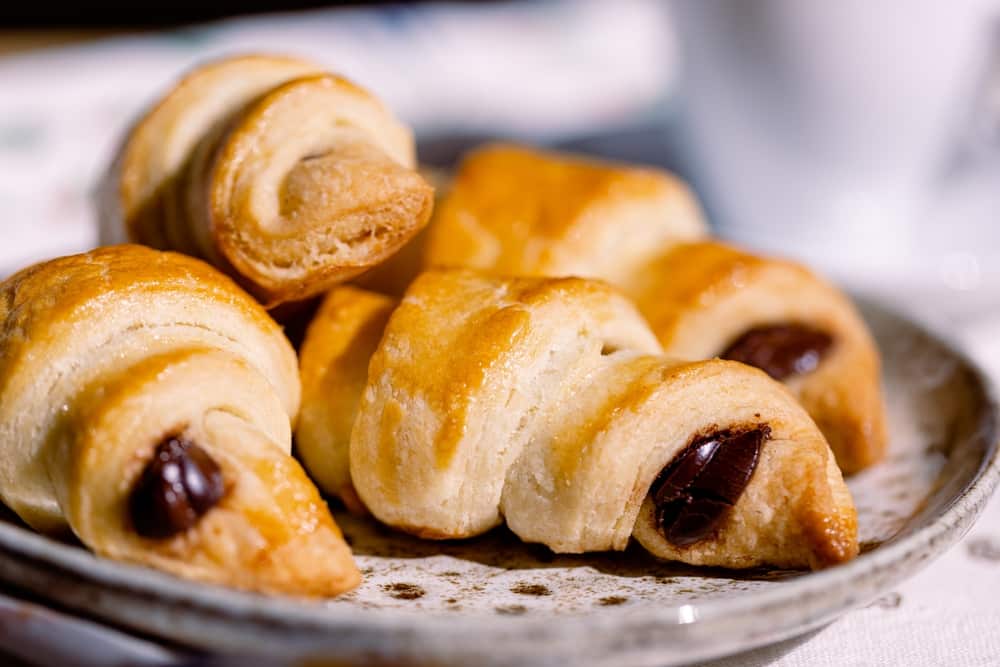
If you are a fan of baking desserts, particularly pies and pastries, you would know the importance of selecting the right crust because it literally acts as a base for the fruits, custard, and other sweet ingredients. That being said, if you have a hard time selecting the right base, we have a rough puff vs. shortcrust comparison in this post to help you out!
Shortcrust vs. Rough Puff
Shortcrust
Shortcrust is usually compared to hot water crust, but it is different in pliability, rigidity, and texture. To illustrate, it is more flaky and crumbly because the fat pockets help raise the flour during the baking process. However, these fat pockets result in instability, which is why an even dish or pan has to be used to make sure the crust doesn’t collapse. There is a wide variety of shortcrust available, but all of them are made with cold ingredients that have to be worked just enough.
That’s because overworking the ingredients results in the development of gluten, which hardens the crust. You need to ensure minimal handling of shortcrust because it’s hard to give it shape. Similarly, the shortcrust has to be chilled at all times to make sure it retains its structure or shape before it’s put into the oven. Also, since it’s cold before you bake the crust, you cannot use it for hot fillings – you can use it for sweet desserts, quiches, and tarts.
Keep in mind that one needs to blind bake the shortcrust before you add the filling. For the most part, there are no leavening agents in the preparation of shortcrust, which is why it doesn’t puff up even when you bake it. Similarly, it tends to fall apart during eating – the common ingredients include 50% flour and 50% fat, along with water, salt, and sugar. It wouldn’t be wrong to say that shortcrust is similar to tart dough.
As far as the flour is concerned, you can opt for all-purpose flour as it crumbles pretty easily and it ensures easier gluten development. Secondly, butter, lard, and shortening are the common types of fats used in this dough (pure butter works the best). In fact, the shortening can be added to tenderize the dough and make sure that the texture is flaky. However, many people don’t like the flavor of shortening, but butter has a fine flavor.
Rough Puff
Rough puff is basically a rich and flaky pastry and is known as the king of pastries since it has a towering rise and layers. It is made from laminated dough, which means that multiple layers of fat and dough are sandwiched together and rolled. In addition, they are overlapped six to eight times to make sure the layers are created. When the puff is cooked, the air pockets between the layers of dough and fat rise, which leads to an airy and flaky texture.
For the most part, rough puffs are used in the UK to top the wraps and pies. In addition, it is found in French recipes, including mille-feuille (it’s a patisserie with multiple sweet cream layers), pithiviers (domed and round pies with an array of fillings, and tarte tatin. It has an extremely delicate texture, which is why it’s used as a topping for pies, but it can be used as a flat base for different dry ingredients – the ingredients don’t soak into the puff.
Rough puff is similar to pastry puffs, but the fat-handling process is different as fat is dabbed on the rolled dough but rolling and folding are still essential to develop the flakes. A rough puff pastry is a quick pastry and has become a promising choice for home bakers and professionals as it’s easier to make bakery-standard puff pastries without an extensive preparation process.
On the other hand, if you make the rough puffs at home, you need to add cold butter in dry ingredients and hydrate everything with the help of ice-cold water. In addition, some chefs recommend grating butter into the food processor but rubbing butter with dry ingredients is the easiest (hand-mixing also prevents over-mixing and overworking of the dough). Keep in mind that using pastry cutters and food processors isn’t recommended that it slices down the butter excessively, which prevents the formation of flaky layers, even after baking.